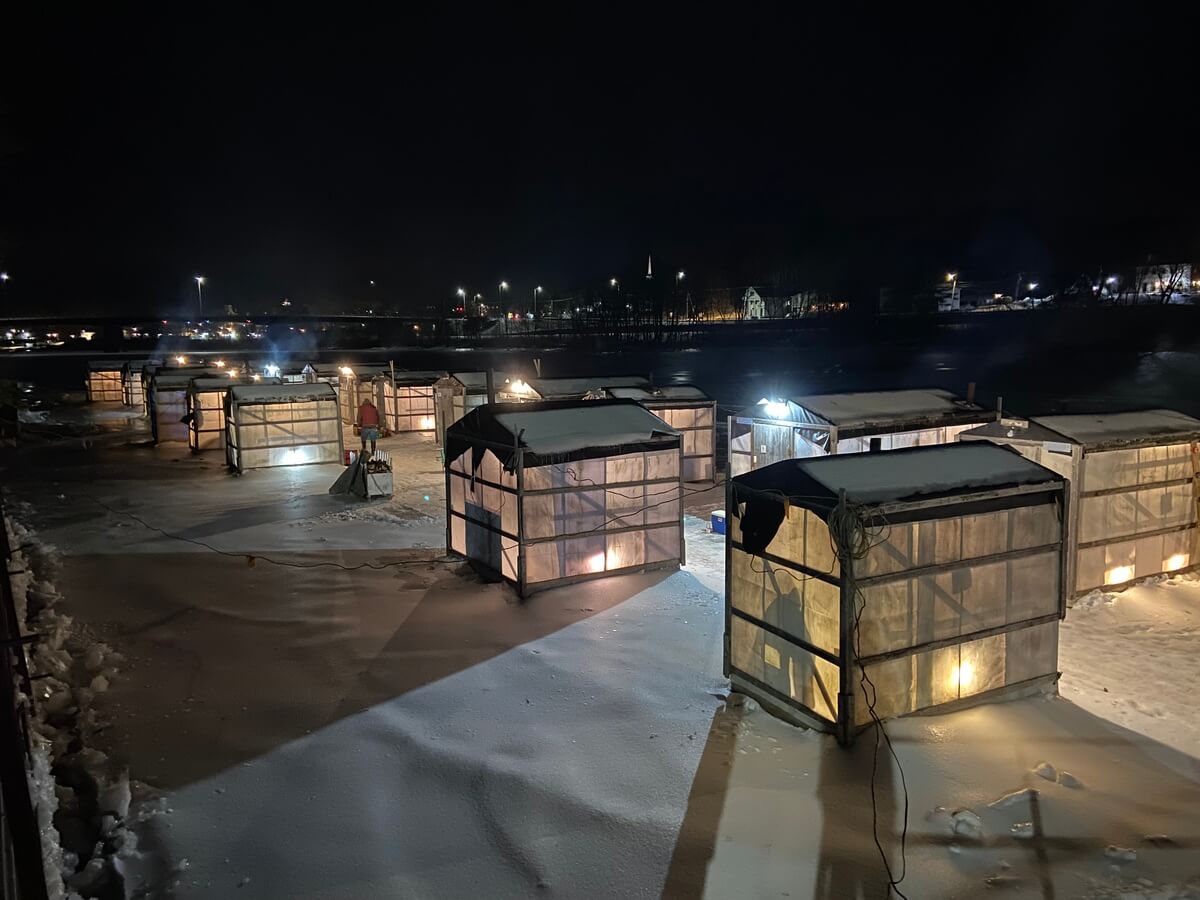Secrets Of Maine’s Kennebec River Logging Camps

Have you ever wondered what life was like in Maine's Kennebec River logging camps? These camps were bustling hubs of activity during the 19th and early 20th centuries. Loggers, also known as "river drivers," worked tirelessly to move massive logs down the river. They faced harsh weather, dangerous conditions, and long hours. Despite the challenges, a strong sense of camaraderie and adventure kept spirits high. Today, these camps offer a fascinating glimpse into a bygone era. From the tools they used to the stories they told, the history of these camps is rich and captivating. Ready to step back in time? Let's dive into the secrets of the Kennebec River logging camps.
Secrets of Maine's Kennebec River Logging Camps
Maine's Kennebec River logging camps hold a treasure trove of history. These camps once buzzed with the activity of loggers who braved harsh conditions to harvest timber. Today, remnants of these camps offer a glimpse into a bygone era. Let's uncover some of these hidden gems.
1. The Forks
The Forks, where the Dead River meets the Kennebec, was a bustling hub for loggers. This area served as a key point for log drives. Here, loggers would gather, rest, and prepare for the arduous journey downstream.
Highlights:
- Historic Sites: Explore old logging camp ruins and artifacts.
- Scenic Views: Enjoy breathtaking views of the river confluence.
- Outdoor Activities: Engage in hiking, fishing, and white-water rafting.
2. Moxie Falls
Moxie Falls, one of Maine's highest waterfalls, was a favorite spot for loggers. The falls provided a natural break in the landscape, making it easier to transport logs downstream.
Highlights:
- Waterfall: Witness the stunning 90-foot drop of Moxie Falls.
- Trails: Hike through lush forests to reach the falls.
- Wildlife: Spot local wildlife along the trails.
3. Caratunk
Caratunk, a small town along the Kennebec River, played a significant role in the logging industry. Loggers would often stop here to rest and resupply before continuing their journey.
Highlights:
- Historic Buildings: Visit old structures that once housed loggers.
- River Access: Enjoy easy access to the Kennebec River for kayaking and fishing.
- Local History: Learn about the town's logging past at the local museum.
4. West Forks
West Forks, located at the junction of the Kennebec and Dead Rivers, was another crucial spot for loggers. This area provided a strategic location for managing log drives.
Highlights:
- Scenic Overlooks: Take in panoramic views of the river junction.
- Outdoor Recreation: Participate in activities like hiking, ATV riding, and snowmobiling.
- Historic Trails: Walk along trails once used by loggers.
5. Bingham
Bingham, a town with deep logging roots, served as a key supply point for loggers. The town's proximity to the river made it an ideal location for staging log drives.
Highlights:
- Historic Sites: Explore remnants of old logging camps and equipment.
- River Activities: Enjoy fishing, boating, and swimming in the Kennebec River.
- Local Culture: Experience the town's rich logging heritage through local events and festivals.
6. Solon
Solon, situated along the Kennebec River, was a vital stop for loggers. The town's location provided easy access to the river, making it a strategic point for log drives.
Highlights:
- Historic Landmarks: Visit sites that tell the story of Solon's logging past.
- Outdoor Fun: Engage in activities like hiking, fishing, and canoeing.
- Community Events: Participate in local events celebrating the town's history.
7. Skowhegan
Skowhegan, a larger town along the Kennebec River, was a major center for the logging industry. The town's mills processed vast amounts of timber, making it a bustling hub of activity.
Highlights:
- Historic Mills: Tour old mills that once processed logs from the river.
- River Walks: Stroll along scenic paths by the Kennebec River.
- Cultural Events: Enjoy festivals and events celebrating Skowhegan's logging heritage.
8. Waterville
Waterville, located further downstream, played a crucial role in the logging industry. The town's mills and factories processed timber, contributing to the local economy.
Highlights:
- Historic Sites: Discover old mills and factories that tell the story of Waterville's logging past.
- Riverfront Parks: Relax in parks along the Kennebec River.
- Local Museums: Visit museums showcasing the town's industrial heritage.
9. Augusta
Augusta, Maine's capital, was a key player in the logging industry. The city's mills and factories processed timber, supporting the local economy and providing jobs.
Highlights:
- Historic Buildings: Explore old mills and factories that were once central to the logging industry.
- River Views: Enjoy scenic views of the Kennebec River from various points in the city.
- Cultural Attractions: Visit museums and historic sites that highlight Augusta's logging history.
The Legacy of Kennebec River Logging Camps
Kennebec River logging camps hold a special place in Maine's history. These camps were more than just work sites; they were communities where loggers lived, worked, and shared stories. The camps played a crucial role in the state's economy, providing timber that fueled industries and built cities. Visiting these sites today offers a glimpse into the rugged lives of the loggers and the challenges they faced. The legacy of these camps is preserved in museums and historical sites, allowing us to appreciate the hard work and determination of those who came before us. Exploring these camps provides a deeper understanding of Maine's rich heritage and the importance of the logging industry in shaping the state. Whether you're a history buff or just curious, the Kennebec River logging camps are a fascinating chapter in Maine's story worth discovering.

